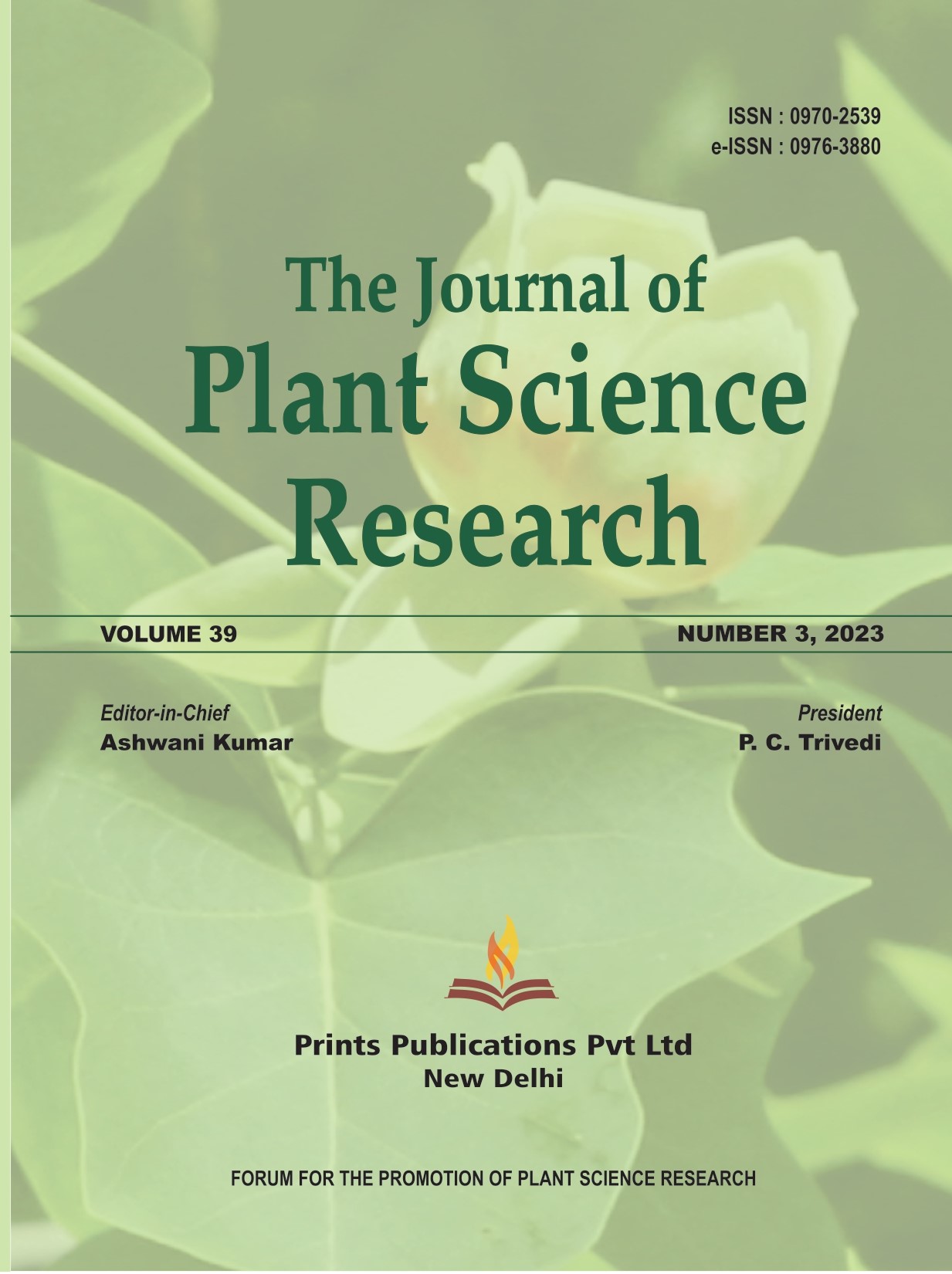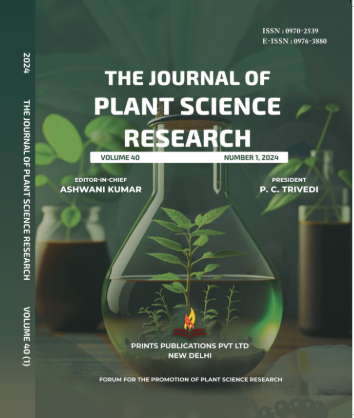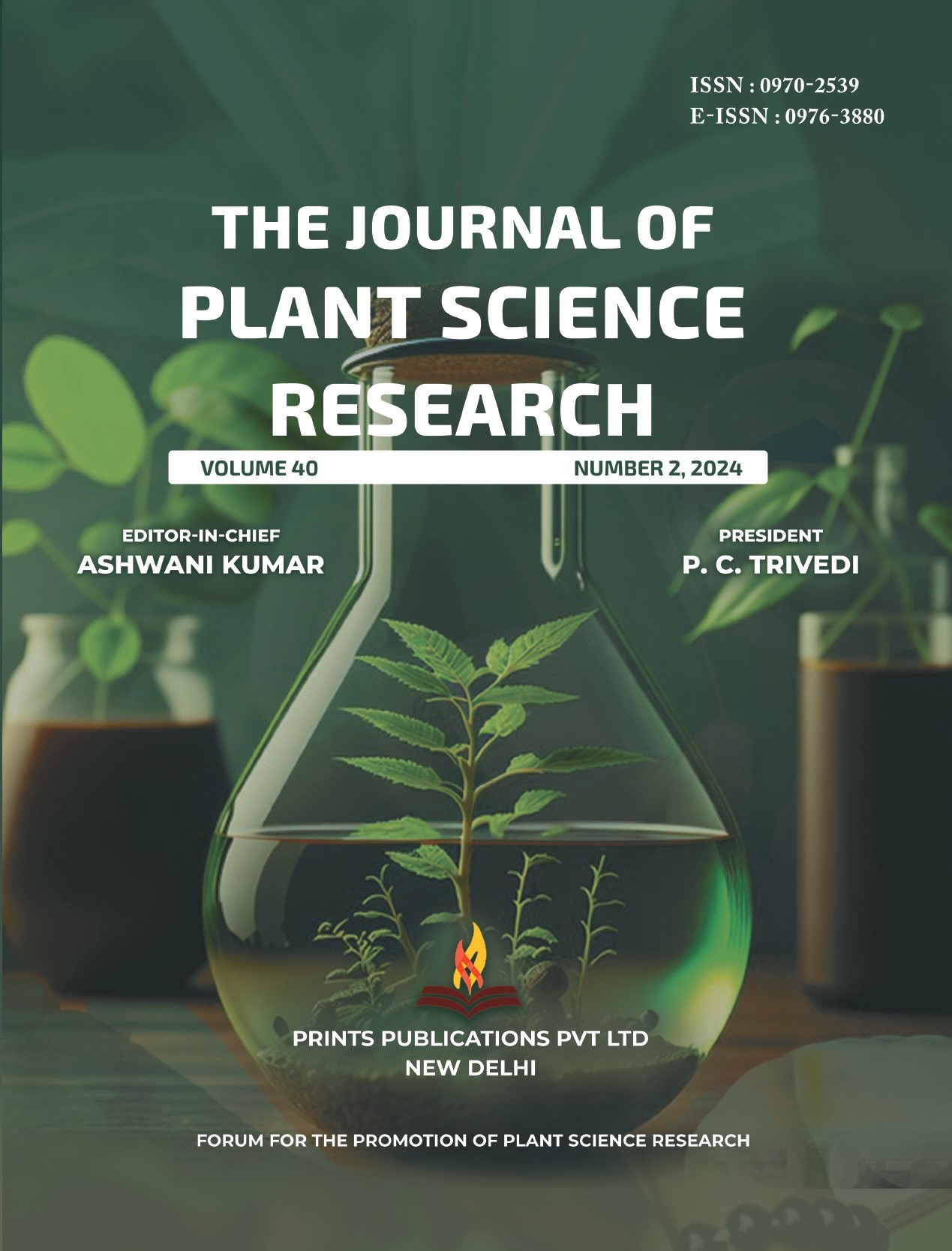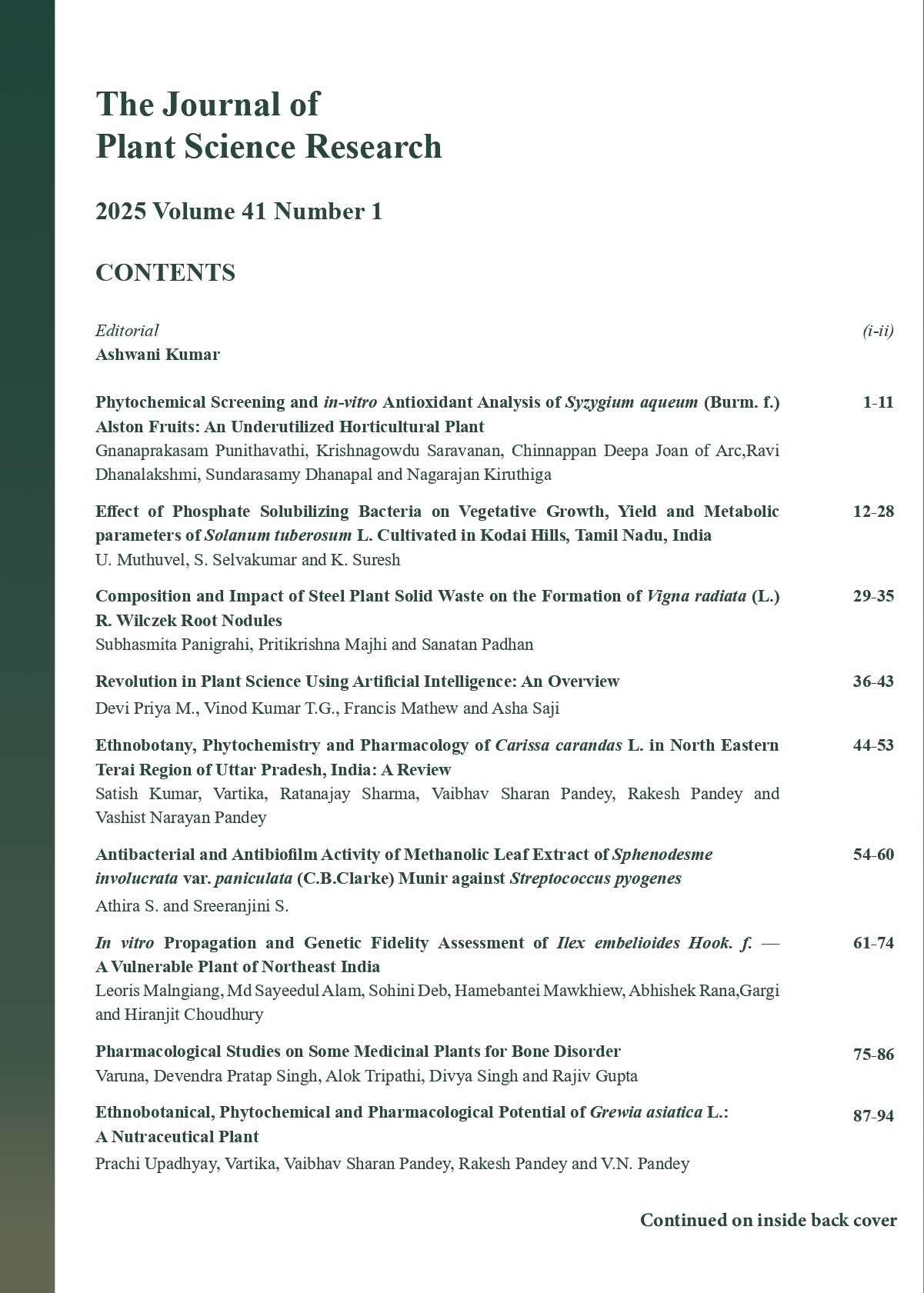The Journal of Plant Science Research - A UGC Care-Listed Journal
Published in Association with Forum For the Promotion of Plant Science Research
Current Volume: 41 (2025 )
ISSN: 0970-2539
e-ISSN: 0976-3880
Periodicity: Tri-annual
Month(s) of Publication: April, August & December
Subject: Botany
DOI: 10.32381/JPSR
Online Access is Free for Life Member
ISSR Diversity and Genetic Differentiation of Selected Fennel (Foeniculum vulgare Mill) and Implications for Precious Fennel Germplasm Conservation
By : Chitrangda Yadav, C P Malik
Page No: 21-26
Abstract
Fennel (Foeniculum vulgare Mill.) is an important medicinal plant used for various purposes in different industries. In this study, the genomic DNA profiles of fourteen fennel varieties/accessions of Foeniculum vulgare P.MILL (fam: Apiaceae) were collected from different locations in Northern India. Seeds of defined varieties grown in Rajasthan were procured from the Department of Plant Breeding and Genetics, S.K.N College of Agriculture, Jobner, Jaipur (Rajasthan) cultivars were evaluated using 73 ISSR primers were screened. The characteristics of 22 amplified (ISSR) inter simple sequence repeat markers with a total of 180 fragments, of which 150 were polymorphic. In UPGMA cluster analysis based on simple matching dissimilarity matrix resolved the fourteen investigated cultivars were represented in eight main groups and this showed wide range of genetic diversity. Genetic similarity within accessions 6 (RF-205) and 4 (RF-145) was very wide. Variety 6 was very different ranged from 0.79 to 0.98. The most genetic similar ranged from 0.96 variety 9(GF-02) to 0.98 variety 10(GF-12) (figure 5). Overall, the study ascertained that ISSRs provide powerful marker tools in revealing genetic diversity and relationships in Fennels, thereby proving useful for selection of parents in breeding programs and also for DNA fingerprinting and identification of cultivars. In term of conservation program, it is highly recommended at least one conservation program for several accessions with near genetically distance should be conducted.
Authors :
Chitrangda Yadav : PhD Research Scholar,Jaipur National University, Jaipur-302017, Rajasthan, India
C.P.Malik : Advisor (Academics), School of Life Sciences, Jaipur National University, Jaipur-302017, Rajasthan, India






